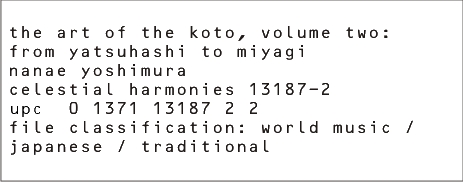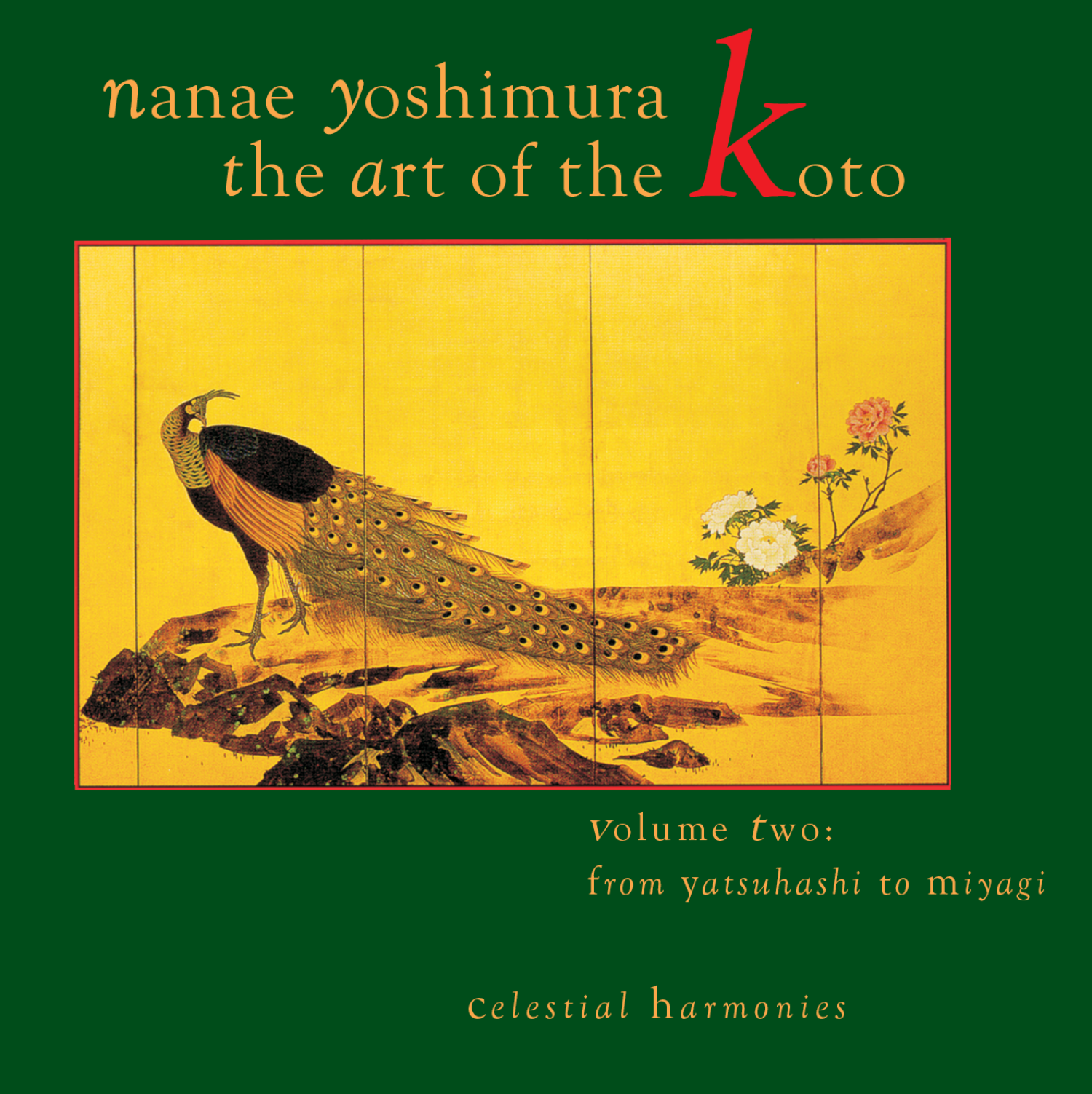 |
|||||||||||||||||||||
 
the projectVolume Two of this series, which features the artistry of the koto player Nanae Yoshimura, comprises six pieces ranging from the core classical repertoire of the 17th century to new works composed in the first decades of the 20th. Two great masters stand out: Kengyo (Kengyo meaning master) Yatsuhashi (1614-85), the founder of the tradition of Japanese koto music played by blind musicians, and Michio Miyagi (1894-1956), the great blind musician of the first half of the 20th century who not only embodied that tradition but opened up exciting new possibilities through his new compositional and performance activities. The koto belongs to the family of long zithers, and as with many other Japanese instruments, it can be traced back to the Asian mainland. Its history in Japan spans more than twelve centuries. The slightly convex body of the instrument is a hollow shell made of kiri, or princess tree, and its strings are traditionally made of silk, although nylon strings are now in common use. In the initial planning stages, it was envisaged that this second volume should continue the chronological survey of the history of music for koto started in Volume One, beginning with the second half of the 19th century, where the first volume left off. Lively discussions amongst those involved, however, encouraged Yoshimura to include two more pieces from the core classical repertoire attributed to Yatsuhashi: Shiki-no-kyoku as an example of his koto kumiuta (‘song cycle’) repertoire, and Hachidan as the third and final danmono attributed to him. The former, especially, is a brave choice. Although it was by means of mastering the thirty–something pieces of the kumiuta repertoire that musicians of this genre trained until the end of the 19th century, few koto players today are attracted by the refined restraint that they require. In contrast, the danmono repertoire is still extremely popular, and Yoshimura’s renditions, in this and the preceeding volume, of all three pieces attributed to Yatsuhashi should join the ranks of definitive readings. Booklet annotation is provided by Associate Professor Steven G. Nelson, the only Western member of staff at the Research Centre for Japanese Traditional Music, Kyoto City University of Arts, Kyoto, Japan. the artistsNanae Yoshimura was born in Tokyo and began to study the koto from the age of three, receiving her teaching license with the Matsu-no-mi Kai of Ikuta–school koto performance at the age of sixteen. She studied the classical repertoire for koto and jiuta shamisen with Soju Nosaka of the Kyushu lineage, and contemporary works for koto and nijugen (21-stringed koto) with Nosaka's daughter, Keiko Nosaka. She has been especially active as a specialist on the latter instrument since the early 1970s, always in search of new possibilities for musical expression and extending the horizons of the instrument. Satomi Fukami, second koto, studied with the late Kiyoko Miyagi (a former ‘Living National Treasure’) and Kazue Miyagi. She has traveled extensively overseas to North America, Europe and Asia. Kifu Mitsuhashi, shakuhachi, the recipient of numerous awards in Japan, holds the qualification of shihan (master) in the Kinko school, and runs his own group for shakuhachi performance, the Kifu Kai. biographydiscographytracklist
|
|||||||||||||||||||||
|
|
|||||||||||||||||||||
 |


